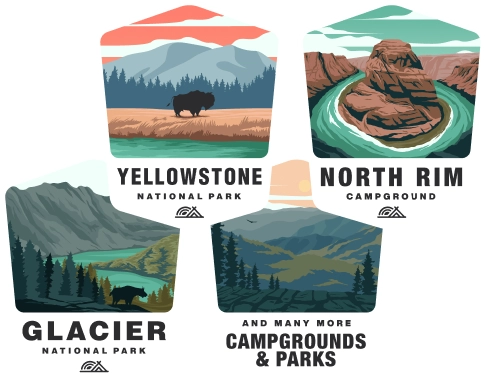Camping at Umpqua National Forest
General Information
Umpqua National Forest spans 1,252 square miles in the Cascade Range of southern Oregon, USA. The forest provides a diverse landscape of clear-water lakes and rivers, abundant wildlife, and a multitude of recreational activities. Before heading there, you should know about the permits required, best times to visit, and the kind of facilities available.
Location and Access
Umpqua National Forest is located between the cities of Roseburg and Bend in Oregon. The main highways providing access are OR-138 and OR-58, along with several forest roads that extend into more remote areas. The forest service provides road and travel information, which is essential to check prior to visiting as conditions can change due to weather.
Permits and Reservations
- Recreation Passes: Many of the day-use sites and some trailheads require a Northwest Forest Pass, which can be obtained online or at local vendors.
- Camping Reservations: Many campgrounds can be reserved in advance through recreation.gov, while others are available on a first-come, first-served basis.
- Special Permits: Wilderness permits may be required for certain areas and can be obtained at ranger stations or online. Some areas also require specific permits for activities like firewood cutting or mushroom gathering.
Best Times to Visit
The best time to visit Umpqua National Forest for camping is typically from late spring to early fall. Snow can linger at higher elevations well into June or even July, and by late October, many higher elevation sites become inaccessible due to snow.
Camping Options
Umpqua National Forest offers a variety of camping experiences:
- Developed Campgrounds: These have amenities like picnic tables, fire rings, toilets, and potable water. Some may also have showers and electrical hookups.
- Dispersed Camping: Outside of developed campgrounds, this type of camping is allowed within certain guidelines, such as being a certain distance from water sources and roadways.
- RV Camping: There are campgrounds with facilities for RVs, though the length of vehicles that can be accommodated varies by site.
- Backcountry Camping: For an immersive experience, backpackers can camp in the wilderness areas. It requires a higher level of preparedness and adherence to Leave No Trace principles.
Activities
Popular activities in the forest include:
- Hiking: Trails range from easy walks to challenging backcountry treks.
- Fishing and Boating: The forest’s rivers and lakes offer trout and salmon fishing, and areas for boating and water activities.
- Mountain Biking: Some trails are open to mountain biking.
- Wildlife Watching: The area is rich in wildlife including deer, elk, and a variety of bird species.
Safety and Regulations
- Fire Safety: Follow all fire restrictions and regulations. Use existing fire rings, and never leave fires unattended.
- Wildlife: Store food properly and be bear aware. Never feed wild animals.
- Leave No Trace: Pack out all your garbage and leave your campsite cleaner than you found it.
- Weather: Be prepared for changing weather conditions, especially at higher elevations.
Facilities and Services
Services such as restaurants, groceries, and medical facilities are not available in the forest. Nearest towns should be accessed for these services. Basic conveniences may be available at some campgrounds during peak season.
Accessibility
Accessibility may vary across the forest's facilities. Check specific site details for information about accessibility for individuals with disabilities.
Local Attractions
- Crater Lake National Park: A short drive to the east, this national park is home to the deepest lake in the United States.
- Waterfalls: The Umpqua National Forest is famed for its beautiful waterfalls, including Toketee, Watson, and Clearwater falls.
- Hot Springs: Umpqua Hot Springs is a popular natural feature.
Contacting the Forest Service
For current information on conditions and regulations:
- Visit the official Umpqua National Forest website.
- Call or visit local ranger stations.
Conclusion
Planning is essential for a successful camping trip to Umpqua National Forest. By familiarizing yourself with the information provided, ensuring you have the necessary permits, and respecting the forest's regulations and natural habitats, you can have a memorable and enjoyable outdoor experience.
